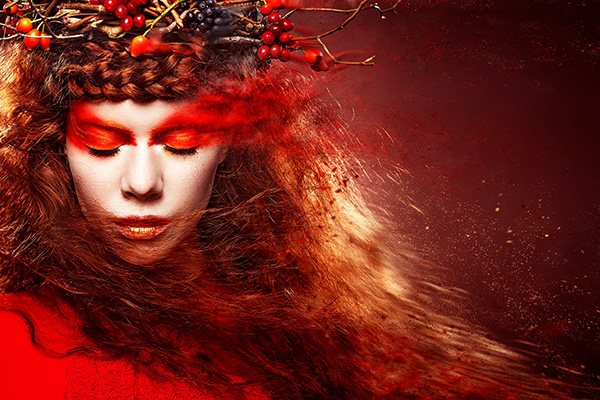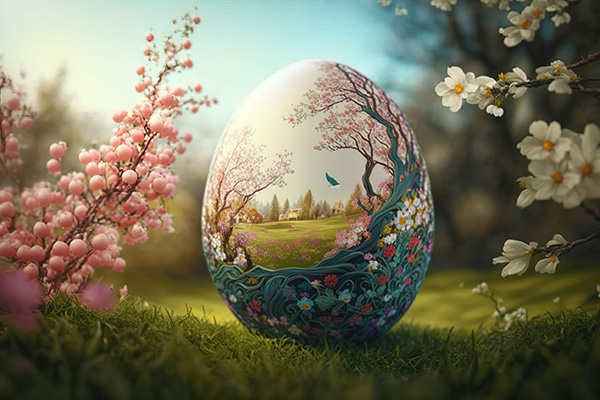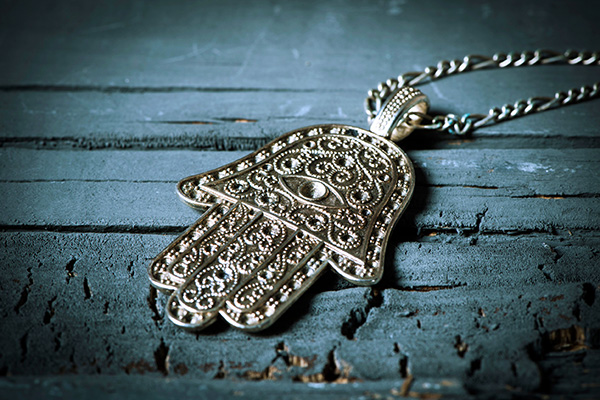fertility
Inner Journey To The Mystical Isle Of Avalon
 Sometimes when the pressures and demands of modern life become too much, I retreat to one of my favorite places in the universe: the mythical island of Avalon.
Sometimes when the pressures and demands of modern life become too much, I retreat to one of my favorite places in the universe: the mythical island of Avalon.
This legendary island of Celtic mythology is steeped in legends of healing, psychic learning, sacred crafting, and the life and times of King Arthur. Its name translates as “Isle of Apples,” emphasizing its association with fertility, abundance, and otherworldly beauty.
In folklore, Avalon, or Insula Avallonis, was a sanctuary of deep spiritual and psychic knowledge and was known as a training ground for pagan priestesses dedicated to the Great Mother Goddess. These women dedicated their lives to spirituality, honing their skills in clairvoyance, herbalism, weaving, and deep devotion to the Divine Feminine.
But Avalon was not only a sanctuary for women. Men were also an integral part of its story. Merlin the magician is inextricably linked to the history of the island, having trained the young Arthur there for his kingship.
Avalon is also entwined with many other tales woven through the lives of King Arthur, Guinevere, Morgan le Fay, Merlin, Nimue (the Lady of the Lake), and others. Legend also has it that King Arthur was brought to Avalon by his half-sister, Morgan le Fay, to heal after being badly wounded in battle.
The question of whether Avalon really existed straddles the line between myth and reality. Some historians and researchers speculate that Avalon may be based on a real place. Glastonbury, England, is often associated with Avalon because of its mystical aura and ties to Arthurian legend.
Tarot Forecast November 2024: King Of Pentacles
 The card I drew for this month is the King of Pentacles, which predicts a time of stability, abundance, and grounded success. This card is associated with material wealth, financial security, and mastery of the physical realm. It signals that now is the time to use your practical wisdom and focus on tangible results.
The card I drew for this month is the King of Pentacles, which predicts a time of stability, abundance, and grounded success. This card is associated with material wealth, financial security, and mastery of the physical realm. It signals that now is the time to use your practical wisdom and focus on tangible results.
Whether we’re building a business, investing in a new opportunity, or seeking a stable foundation, the King of Pentacles reminds us that patience, diligence, and careful planning are the keys to long-term success.
The imagery of the King of Pentacles is rich in symbolism. Sitting on an elaborate throne decorated with carvings of bulls and vines, he is a figure of authority and strength closely associated with the earth element. The grapes and lush greenery surrounding him symbolize fertility, prosperity and the fruits of hard work.
In his hand he holds a golden pentacle coin, representing mastery over the material world and the ability to turn dreams into reality. His robes are embroidered with images of grapes and vines, further reinforcing the themes of abundance and material growth.
The king’s pragmatic energy of self-mastery suggests that this November will not be a time for reckless actions or impulsive decisions. Instead, it’s about making strategic moves with confidence and a long-term perspective.
The symbolism of this card also encourages embracing a provider role – whether in business, family or community – as the King of Pentacles is a generous benefactor and pragmatic leader who shares his wealth and success with others.
Invoking The Power And Beauty Of Freya
 The goddess Freya has a special place in my spiritual self-care routine. I often turn to her when I need extra guidance and support.
The goddess Freya has a special place in my spiritual self-care routine. I often turn to her when I need extra guidance and support.
Freya is the ancient Norse goddess of love, beauty, fertility, and war. She is one of the most important deities in Norse mythology, embodying the ultimate ancient archetype for ‘girl power’ and ‘boss lady’ energy.
She is traditionally revered for her deep wisdom, boundless compassion, and fierce protection. Invoking her divine feminine power has brought much transformative and empowering energy to many aspects of my life.
In Norse folklore, Freya rides a chariot drawn by two large, powerful cats and is often depicted wearing the Brísingamen necklace, a symbol of her power and beauty.
The Brísingamen was created by four dwarves known for their exceptional craftsmanship. The necklace symbolizes beauty, desire and the power of attraction. It also represents Freyja’s connection to the earth and its fertility.
Freya is the leader of the Valkyries, the warrior maidens who choose those who may die and those who may live in battle. Freyja is said to receive half of the slain warriors in her heavenly field, Fólkvangr, while the other half go to Odin’s hall, Valhalla.
This dual role highlights her authority and revered status among the gods, bridging the realms of life and death. The Valkyries, under her guidance, serve not only as fierce selectors of the fallen but also as protectors and guides for these chosen souls, ensuring their honored place in the afterlife.
Revitalize Your Life With A Spiritual Spring Clean
 The spring season is upon us and with it comes a fresh energy of renewal and rebirth.
The spring season is upon us and with it comes a fresh energy of renewal and rebirth.
Very often at this time of year people do a “spring cleaning” of their homes and workspaces, and for good reason. On a spiritual level, we have been moved by the powerful influence of this vibrant seasonal energy since the beginning of time.
As the light of the sun returns and the air begins to warm, we feel on a deep level the cycle of rebirth and the return of fertility to the earth that sustains us, just as our ancestors did through the ages. It inspires us to make room in our lives for this invigorating energy of renewal.
The ancients held the spring in high regard, attributing significant spiritual and symbolic meanings to the season. Although beliefs varied across different cultures, they mostly centered around themes of renewal, fertility, rebirth, and celebration.
In Ancient Egypt, for example, spring was closely associated with the annual flooding of the Nile, which brought fertile silt to the fields. The Egyptians celebrated the festival of Sham el-Nessim, marking the beginning of spring, which was believed to bring rejuvenation and health.
The Mystical Symbolism Of The Hamsa
 The well-known Hamsa symbol has a rich tapestry of esoteric meaning that spans several cultures and religious traditions, including Islam, Judaism, and Christianity. It is commonly used as a protective amulet, offering protection from the evil eye, as well as a talisman or good luck charm, bringing its wearer blessings in the form of happiness, health, and fortune.
The well-known Hamsa symbol has a rich tapestry of esoteric meaning that spans several cultures and religious traditions, including Islam, Judaism, and Christianity. It is commonly used as a protective amulet, offering protection from the evil eye, as well as a talisman or good luck charm, bringing its wearer blessings in the form of happiness, health, and fortune.
The Hamsa is also known as the Khamsa, Hamesh, the Hand of Fatima, the Hand of Miriam, or the Hand of Mary. The names “Hamsa” and “Khamsa” both refer to the number five in Arabic while “Hamesh” means five in Hewbrew, all symbolizing the five fingers of the hand.
In Islamic tradition, this famous esoteric hand is named after Fatima al-Zahra, the youngest daughter of the Prophet Muhammad and his first wife Khadija. Fatima is known by many titles in Islamic tradition, of which al-Zahra (meaning “the Radiant One”) is one of the most prominent. Her life, devotion to family and faith, and moral integrity are admired and serve as an inspiration to Muslims around the world.
In Jewish culture, the hand symbol is named after Miriam, the sister of Moses and Aaron, who was a prophetess and is an important figure in Judaism. In some Christian contexts, it is also known as the Hand of Mary, although it is less commonly referred to by this name. In this instance it is associated with Mary, the mother of Jesus, who is revered for her purity, grace, and maternal protection.
The Spiritual Practice Of Flower Power
 Every now and again, I purchase a bouquet of flowers as a gift to myself. Placing a vase of flowers on your home altar or sacred space adds nature-inspired ambiance, brightness, and sensuality to one’s spiritual self-care.
Every now and again, I purchase a bouquet of flowers as a gift to myself. Placing a vase of flowers on your home altar or sacred space adds nature-inspired ambiance, brightness, and sensuality to one’s spiritual self-care.
I also love to diffuse the essential oils of flowers, especially when I meditate, but they don’t have the tangibility and energetic beauty of a stunning array of fresh blooms. Analogous to eating whole food versus taking a supplement, fresh flowers represent the wholeness, divine design, and awe-inspiring beauty of Gaia, Mother Nature, our Earth Mother, the Divine Feminine.
Unadulterated, the ‘flower power’ of a beautiful bouquet commands marvelous healing energies, blesses the giver, and inspires bountiful gratitude in the recipient.
The most powerful spiritual practice involving flowers is to plant your own flower garden with perennial varieties, such as tulips, black-eyed susans, and chrysanthemums. With careful planning around the seasonal calendar one can also have different species in bloom at different times throughout the entire year.
Cultivating a thriving garden of flowers is a magnificent form of energy work. It attracts and manifests emotional healing, abundance, and the fulfillment of wishes, especially in aspects of romance, marriage, fertility, and parenthood. By lovingly nurturing and caring for the delicate beauty of living flowers, we invite much love, beauty and abundance into our lives.
Soul Circle Family Ties
 Children choose their parents and families before they arrive in this world. In spiritual terms there is therefore no difference between a biological child and an adopted child. All souls belong to a soul group or soul circle, no matter what their chosen physical incarnation and human family structure may be.
Children choose their parents and families before they arrive in this world. In spiritual terms there is therefore no difference between a biological child and an adopted child. All souls belong to a soul group or soul circle, no matter what their chosen physical incarnation and human family structure may be.
The soul of an adopted child is just as much part of her family’s original soul circle as that of her sister, who chose instead to be physically born into the same family. They have both been part of their soul circle for eternity, and always will be.
Parents of adopted children, who also have biological children, will tell you that they feel the same spiritual and emotional bond with all their kids. They experience the same levels of attachment, connection, and love with each child. Spiritually aware parents often also report that they feel they have known the souls of both their adopted and biological children in previous lifetimes, or that there was an instant soul recognition the moment they first saw each child.
We choose our earth families, parents, and physical bodies before we are born. Our soul knows before birth the physical traits, capacities, and disabilities our body will have in this lifetime, as well as the talents, gifts, shortcomings, and limitations we will have in our chosen incarnation.
We also decide how we wish to join our chosen human families, including by birth, surrogacy, adoption, and even the blending of families. These choices our souls make are determined by our chosen soul purpose and life path. There are many karmic reasons why soul circle members may prefer adoption, instead of biological birth.